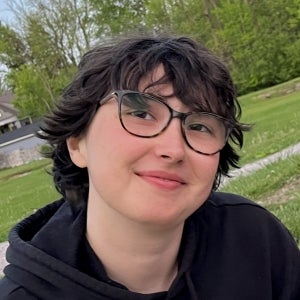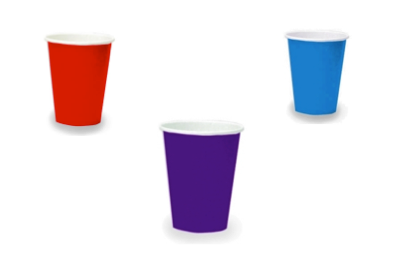The moment I knew that Oberlin, and its ability to embrace difference, had permeated our family unit was when my youngest son, then a 2nd grader, came home from school in a huff. When asked what was the trouble, he said he'd had a disagreement with the principal. Bracing for the worst, I asked what the disagreement was about. He grumbled: "There's a rule in our school that if we want to dye our hair it has to be a natural color. I want to dye my hair pink and they told me it is not a natural color. I said, but I live in Oberlin. It's a natural color THERE."
Around this same time, when we wanted our kids to feel like they were a part of a decision-making process, we would limit them to two choices. We called this the "red cup, blue cup" exercise. The general rule of thumb in a household of little people is this: if you want to get dinner on the table quickly, it is not wise to ask a 7 year old "what do you want to drink with your dinner?" because you will invariably get an answer you weren't prepared to hear and then have to spend 15 minutes explaining why Cherry Coke is not really an option. By limiting the options, parents think they have control, but of course, it is only a façade. Sooner or later everyone realizes that decisions can't always be reduced to just two choices.
Life seemed simpler when my sons were 7 and 10. As they grew older we outgrew the need for red cup/blue cup binary. With time I came to understand and appreciate the diversity of thought within Oberlin. There are red cups and there are blue cups to be sure, but there are also many shades of purple, and each of those cups and colors has value. I love this place, and I love teaching Oberlin students, because they think in technicolor. Not just with their hair color, but with their creative minds and their empassioned actions.
The past few weeks at Oberlin have been very hard, but they have reminded me why I care so much about this place and the work that we all do, on a variety of levels, on this campus. As a community, we talk about things, even when things are hard to talk about. I was reminded of a wonderful book I quite accidentally found one summer while wandering through the Education section of Mudd Library. In Teaching One Moment at a Time: Disruption and Repair in the Classroom, Dawn Skorczeiwski talks about the "delicate negotiation" between teacher and student in the classroom, and how disruptions, challenges, and difficulties can not only serve to deepen learning in the classroom, but they can help teachers develop what she calls an emergent pedagogy wherein everyone in the classroom is a learner, including the teacher.
Disruptions in the emergent classroom, according to Skorczeiwski, allow us to "bring the outside world into the classroom to be transformed into knowledge" and help us "initiate our students into an intellectual world in which the classroom and the outside are part of the same continuum and where real change can happen from the knowledge we construct together."
In other words, disruption can be painful and troubling, but if as educators we help conversations flourish, and avoid using our privilege as "the leader" of the classroom to shut them down or stifle difference, disruptions can compel us to think and work and talk together about difficult things, and make it possible to find solutions.
I believe in the cycles of disruption and repair, and I believe in their ability to make change happen for the better... both in the classroom as well as the community of technicolor ideas and very big hearts that surrounds us. Disruption and repair will, I believe, bring us closer and help us see new possibilities.
As always, I welcome your comments and thoughts.



